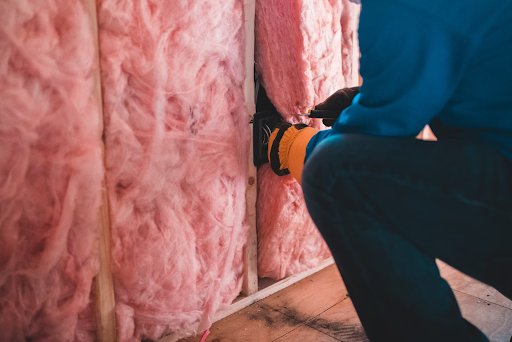Image from on Erik Mclean Unsplash
When your HVAC system doesn’t seem to achieve efficient heating and cooling despite being installed perfectly by professionals, it’s a sign of air leakage somewhere in your home. More often, air leakages happen when your home’s insulation fails. However, with proper insulation, your HVAC unit doesn’t have to work hard to balance the air in your home.
To avoid heating and cooling challenges brought about by improper insulation, you must know where to insulate. Below, we’ll look at some crucial areas in your home you should insulate for optimal HVAC performance.
The Attic
Your attic tops the list when it comes to areas that need insulation in your home for optimal HVAC performance. The warm, heated air from your home naturally rises toward your attic and can either be blocked back or allowed to escape, depending on the insulation quality. Similarly, hot air from the hot summer sun can be restrained at your attic level or allowed in if air leakage gaps exist. To leave your attic uninsulated is to expose your home to unstable temperatures and to force your unit to work extra hard.
Even before inviting trusted local HVAC technicians like Hodges Heating and Cooling to install your HVAC system, ensure your attic is perfectly insulated. Depending on your budget and the available access space, you may choose between blown-in, batt, or spray foam insulation options for your attic.
Floor and Basement Insulation
No one thinks about insulating their floor and basement until they realise a serious heat-loss problem is developing despite sealing all other heat escape portals in their homes. If your home has uninsulated basements or crawl spaces, heat loss through the floor can cause a significant spike in energy consumption. This is because the heat generated in your home can easily escape into the ground, leaving your home with not enough heat to keep it warm.
By insulating these spaces, you can prevent the heat from escaping and keep your home warm in winter. You may also choose to use spray foam, fiberglass batts, or rigid foam boards for your floor insulation.
Rigid foam boards are the most preferred floor insulation solution because they provide a high R-value and offer good resistance to moisture. You could use spray foam as a gap and crack sealant in the basement to create an airtight barrier for preventing moisture infiltration and heat loss. If you’re working with a tight budget, fiberglass insulation is a great option for satisfactory thermal performance at a lower cost.
Windows and Doors
Windows and doors that aren’t properly sealed can be a significant source of energy loss. The gaps in your windows or doors will allow cold air in or warm air out depending on the weather season. To improve energy efficiency, you can:
- Install insulated curtains or blinds to block out sunlight and offer an additional layer of insulation.
- Use double-glazed windows for minimal heat transfer.
- Seal any gaps by applying weather stripping around windows and doors.
Insulating these key areas around your window will help save on energy bills and create a more comfortable living space.
Whenever you plan to insulate your home for optimal HVAC performance, you can always start with these three main areas in your home. By sealing your attic, floor and basement areas, and your windows and doors, you can save significantly on your energy bill and improve your home’s comfort.


